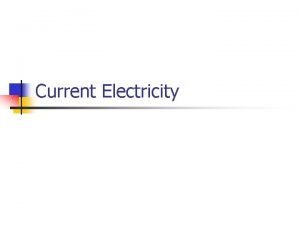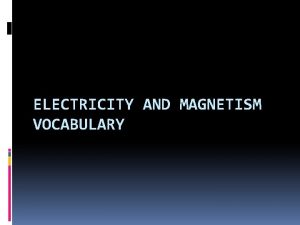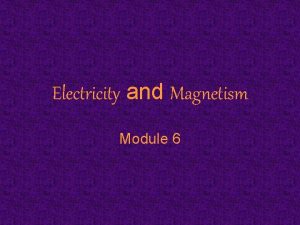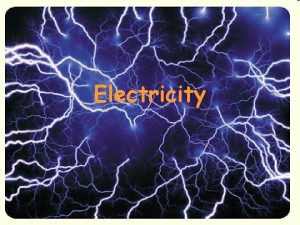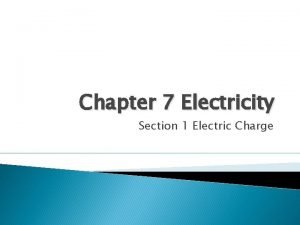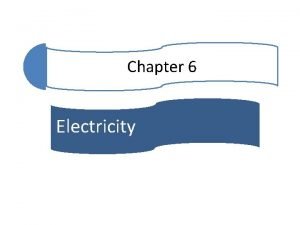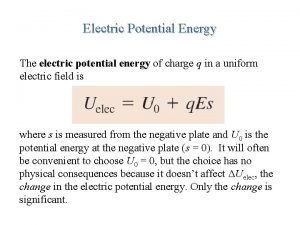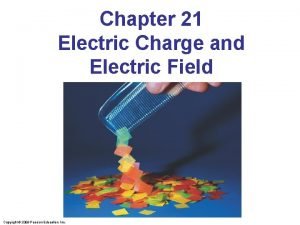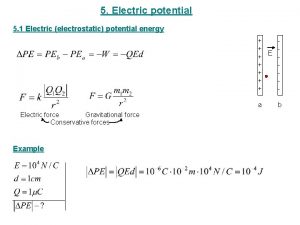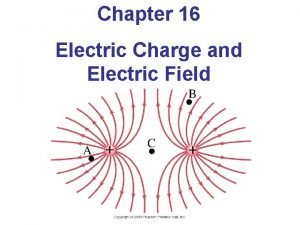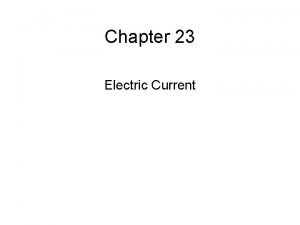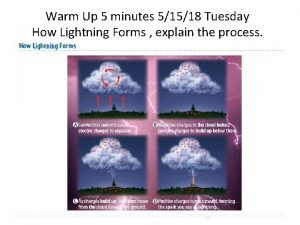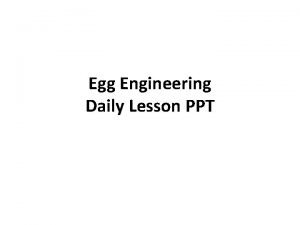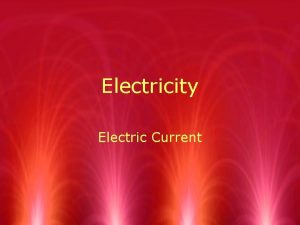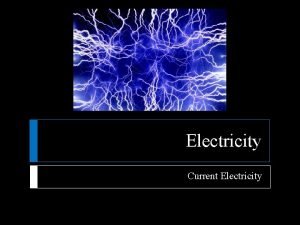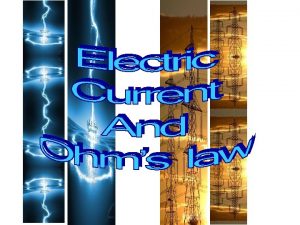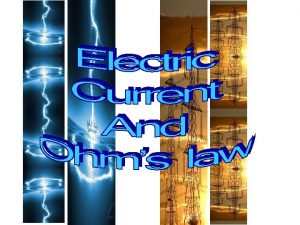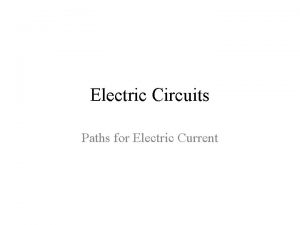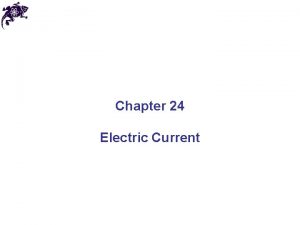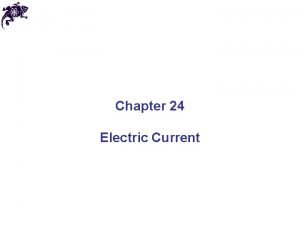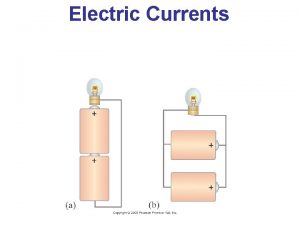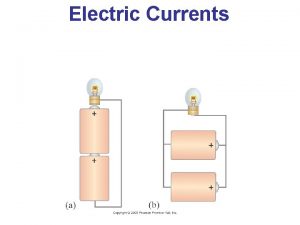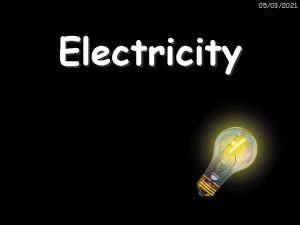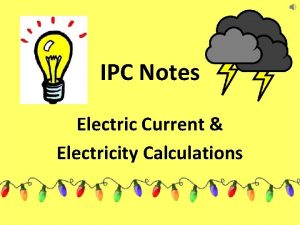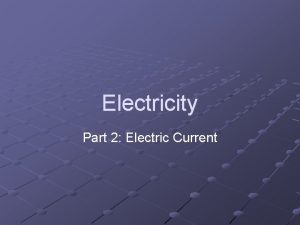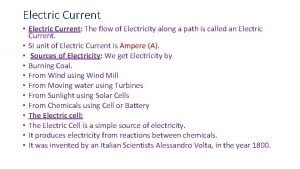Electric Current Current Electricity Current Electricity is the

















- Slides: 17

Electric Current

Current Electricity • Current Electricity is the flow of an electric charge through a conductor.

What is current electricity? • An electric current is a flow of electric charge. • In electric circuits this charge is carried by moving electrons in a wire.

Direction of Current • Conventional Current: • positive negative terminal Electron Flow: We now know it is the electrons that are moving (from negative positive terminal)

Types of Current Direct Current (DC) is when electrons travel in only one direction. • Eg. batteries and solar cells, Alternating Current (AC) results when electrons periodically reverse direction. • Eg Wall outlets in North America reverse current direction 60 times/sec.

Measuring Electric Current (I) • Electric current is the amount of charge passing through a point in a circuit in a given time. • Measured in amperes (A) • 1 Amp is the typical amount of current flowing through a lightbulb. • Ammeter measures current at one point in a circuit.

Calculating Current • Current (I) is expressed by the equation: • Q = quantity of charge flowing by a point in a time period of t. • A current of 1 ampere = 1 Coulomb /second. • 1 Coulomb is equal to the charge contained in 6. 25 x 10 18 electrons • 1 ampere represents the current of one coulomb of charge per second.

Calculating how many electrons go past a point in a set amount of time Q=Ixt

Practice An ammeter reads 10 A. How many electrons flow through the circuit in 1 min? 6. 25 x 10 18 electrons/C

Practice An ammeter reads 10 A. How many electrons flow through the circuit in 1 min? Q = I x t = 10 A x 60 sec = 600 C (Coulombs) # electrons = 600 C x 6. 25 x 10 18 electrons/C = 3. 75 x 10 21 electrons

Practice • An ammeter indicates that a current of 1. 2 A flow through a lamp. How many electrons will go through the lamp in 45 seconds?

Practice I = Q/t Q= It Q= (1. 2 A) (45 s) Q = 54 C

Practice • If 1 C = 6. 25 x 1018 electrons, we can convert coulombs into the number of electrons (N) N = 54 C ( 6. 25 x 10 18 electrons) 1 C = 3. 4 x 10 20 electrons

Getting a shock • Touching a source of electricity completes the circuit and you get a shock. • The severity of the shock depends on the current. • At 0. 0001 A (1 m. A), you will feel a tingling sensation. • At 0. 015 A (1. 5 m. A), your muscles will contract • At 1 A (1000 m. A), your heart stops.

Circuits in Series • only one path for electrons to flow. • Electricity must flow through all devices • If you add electric loads, each on get less electric pressure (light bulbs will dim as more added) • We use series circuits in: • Computers, radios, TV’s, rockets

Parallel Circuits • Current splits up • some of the current goes through each device. • None of the current goes through more than one device.

Practice • HW: Read p 306 -308 • HW: Answer CYU p 309 # 9. . • HW: WB 10. 2 • Activity: PHET Simulation, remainder for HW. You will hand this in next class
 Current electricity gif
Current electricity gif Electricity and magnetism vocabulary
Electricity and magnetism vocabulary Static electricity and current electricity
Static electricity and current electricity Section 1 electric charge crossword puzzle answers
Section 1 electric charge crossword puzzle answers Electricity section 1 electric charge
Electricity section 1 electric charge Chapter 6 section 1 electric charge worksheet answers
Chapter 6 section 1 electric charge worksheet answers Chapter 21 electric charge and electric field
Chapter 21 electric charge and electric field Electric potential from electric field
Electric potential from electric field Chapter 21 electric charge and electric field
Chapter 21 electric charge and electric field Electric field electric potential
Electric field electric potential Chapter 16 electric charge and electric field
Chapter 16 electric charge and electric field Energy electric field equation
Energy electric field equation A suitable electric pump in an electric circuit is a
A suitable electric pump in an electric circuit is a Electric charges and electric forces lesson outline
Electric charges and electric forces lesson outline Chapter 21 electric charge and electric field
Chapter 21 electric charge and electric field Potential difference si unit
Potential difference si unit Venn diagram of climate and weather
Venn diagram of climate and weather What is energy made of
What is energy made of
